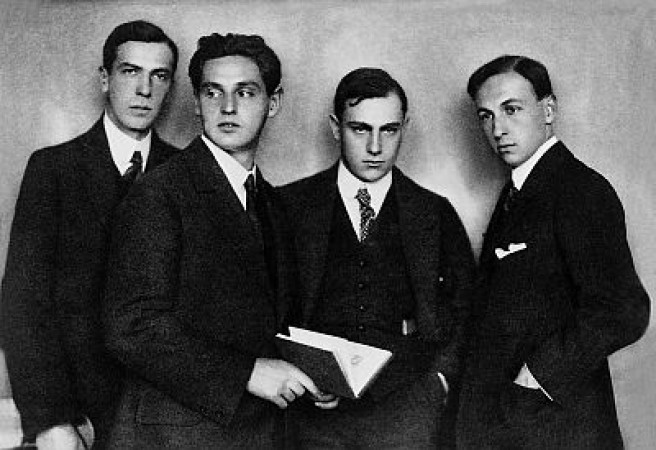
The two composer's-concerts which were performed at the Royal Hall in Budapest on March 17 and 19 in 1910 are considered as triumphant debuts of Bartók's and Kodály's – the „twin asterism of Hungarian musical genius"- appearance as composers by music history. A string quartet, consisting of musicians aged 18-25 was founded for that occasion, became the most important ally of the two composers and performed the string quartets no.1 of both composers with conspicuous excellence. The ensemble was organized by the first violinist Imre Waldbauer and the cellist Jenő Kerpely (1885–1954) in 1909 and the second violinist János Temesváry (1891–1964), and violist Antal Molnár (1890–1983) belonged to the founders of the quartet. The gold backing of the great success of the legendary concert was an amazing preparatory work, as Antal Molnár remembered: ‘...We were not practicing anything else than the two new string quartets from spring 1909 to spring 1910. We had probably 90 rehearsals on the Kodály quartet but Bartók's was more difficult, we had more than 100 on that. According to Waldbauer's principle only that could be played really well what is known from memory; occasionally, around the 50th rehearsal already he closed the score and said: close the score. We closed it. We played all the way through the two pieces by heart. We knew them so much that for example I still know the viola part of both quartets by heart today [1979].'
This exceptional conscientiousness and the dedication toward the two Hungarian composers remained permanent virtues of the quartet's career. They premiered the first four quartets of Bartók and both Kodály quartets but the members of the quartet were godfathers of Kodály's early chamber music for strings and other compositions as well (Op. 7. violin-cello duo: Waldbauer and Kerpely; Op. 8. Solo sonata for cello: Kerpely; Op. 12. Trio serenade: Waldbauer, Temesváry, Kornstein). In the year of their appearance as a comet they also premiered Debussy's String Quartet in Hungary at the composer's only visit to Budapest, and according to the statement of Debussy, they played the work the most beautifully. The premieres of works from the contemporary repertoire by Bartók, Kodály, Dohnányi, Weiner, Lajtha and Debussy, Ravel, Reger, Milhaud, Schoenberg, Szymanowski, Stravinsky, Hindemith and Honegger were attached to the quartet's name and the list is far from being complete.
The row of their appearances abroad was opened by their tour in the Netherlands in 1911; they performed all the Beethoven string quartets at the chamber music feast in London in 1927. This endeavor already marks the other centre of their artistry. Besides their dedication to modern music they also played a pioneer role in the view of domestic musical life with interpretations of quartets of Viennese Classical masters, especially with their readings of Beethoven. Aladár Tóth wrote the following on the 25th anniversary of the quartet about it: ‘…that was how their grandiose interpretation discovered Beethoven's last quartets for the Budapest audience. The repeated series of performances of the late Beethoven quartets, today unparalleled perfect interpretation and triumphant popularization is such cultural deed which is unique in itself in the history of Hungarian musical civilization.'
The chronicle of the history of the quartet would not be authentic if we would withhold that the experimentation and uncompromising artistic demands which characterized their playing did not always meet appropriate reception in Budapest: their concerts were often accompanied by little interest, they played occasionally in front of a half-audience. Although the cream of the following generation of musicians confessed to the exceptional qualities of the quartet and followed them from Endre Gertler to Sándor Végh as an idol. Sándor Végh remembered the ensemble as one of the best quartets in the world and regarded his own quartet (New Hungarian String Quartet) a side-shoot of the Waldbauer quartet.
The leading figures of the ensemble, Waldbauer and Kerpely (whose deep musicality characterized by Sándor Végh as worthy to Casals') remained members of the quartet all the while, although there were frequent changes in the second violin and viola: after the secession of Antal Molnár, János Temesváry played viola, György Hannover, Péter Szervánszky, Tivadar Országh, János Keszler and Egon Kornstein also took part in the work for shorter or longer periods. It has almost symbolic significance that at its farewell concert in 1946 the quartet said goodbye to the audience with String Quartet No. 6 of Bartók, among others.
F. Z.


